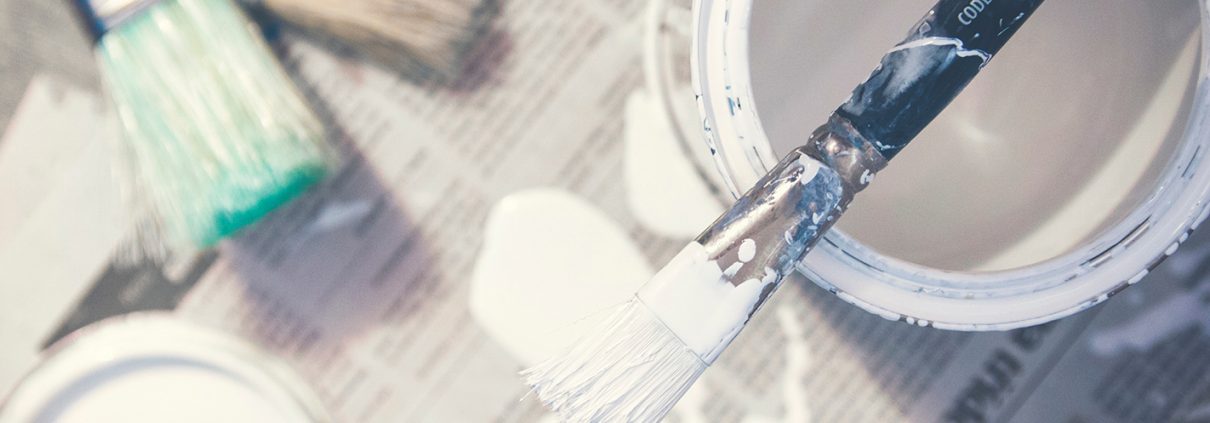What increases the value of my home?
If you watch a lot of HGTV you’ll find all sorts of information on what makes a home more valuable. In reality it can come down to some basic and simple advice.
An appraisal is not simply an addition and subtraction of the costs put into a house. The market value of a home is based on many factors such as location, physical deterioration, exterior influences, geography, national and local economic changes, etc. Appraisers are not just looking at the home, but also at neighborhood, local, and national factors that could affect the opinion of value.
Often each home is unique and has distinct features from each owner. These features can add or subtract from the value of the home depending on what the market find acceptable. Remember when floral wallpaper what a must-have? It might have added value in the 70s, but now it may detract from value because a typical buyer isn’t would be required to spend money to replace it.
Remember, when the buyer feels like they’ll need to repair, replace, or repaint it could cost you twice. Once when you knock the direct repair cost off the sale price, and again when you knock an additional amount off the price as buyer motivation. A buyer that has to repaint a house will want the cost of paint subtracted, but then also an amount for the time, energy, or labor they’ll have to put in to do it.
Our advice on how to add value to your home is:
Keep it simple
The more complex or over-the-top your home is, the more difficult it is to find a buyer that is willing to pay for those exact same details. Keeping a home simple makes resale easy and allows your home to appreciate in value because it won’t have too many items that become outdated. You can still personalize the home anyway you like and find joy living there, but simplicity is key in resale.
Paint it
The color of a house can have a substantial impact on the value of the home. A bright purple exterior, sun yellow kitchen, and green bathrooms might have been great while you lived there, but a typical buyer will likely repaint the whole house and will be willing to pay less for the home because of this labor. To increase the resale value of your home, make sure it fits in with the other homes in your neighborhood or in colors that are accepted in your market.
Fit in
If you want the most out of your home, the best plan is to make sure your home fits in with the other homes around it. Adding things that aren’t typical of your market generally causes super-adequacy. (A typical buyer probably wouldn’t pay extra for a swimming pool in Alaska while that same pool in Arizona would increase the homes value) A good looking, simple home that fits in with the neighborhood will usually command a high price.
Plan 10+ years for personal preference items
A true experience from one of our appraisers: While doing an appraisal on a 3-year old home (purchased for $800,000 2 years prior) the owners pointed out that they had replaced the flooring. They showed receipts totaling $60,000 for the kitchen, laundry, and entryway floors. While the appraiser took this into consideration, the original floors were still in great condition and the new floors were simply a different color. Because the new flooring wasn’t fixing a problem, making the overall house better, or substantially changing the house it did not add any additional value to the home. So while it looked good, that $60,000 was purely personal preference.
“Personal preference” refers to items that the current owners find value or joy in, but that don’t necessarily add value to the overall home. Sometimes they even subtract value. A fireman pole to slide from upstairs to downstairs, new flooring in an already new home, replacing regular walls in the home with brick walls, etc.
A typical buyer expects there to be floors, walls and a roof in a style and layout that is typical for the market. Paying $100,000 to replace walls in your home with brick walls because you like the look generally won’t add value for the typical buyer. So when adding personal preference items make sure you plan on enjoying them for the long-term, so that you get your value back from it.
You typically won’t get dollar-for-dollar returns on what you spend on your home
Be consistent with quality
An appraiser is looking at the overall quality and finish of your home. If you want to remodel or replace something in your home, think about how it changes the overall quality of the house.
Replacing the kitchen countertops with granite is great, but if the bathrooms and laundry rooms still have white formica, the overall finish of your home did not change much. If you recarpet the master bedroom, but the other bedrooms still have 20 year old carpet, the overall finish of your home did not change much.
A home that has consistent colors, finish, and quality will usually command a higher price.
Consider selling as-is
Does your home need new carpet, new bathroom tile, new kitchen sink, a few broken windows, outdated wallpaper, is ready for a new A/C, and needs some drywall patching?
Sometimes the best thing to do is nothing. Selling your home for a discount, “as-is”, and letting the buyer make the repairs could give you the most value. If the cost of repairs + the time and energy you would need to put into the home exceeds the seller price discount it’s probably best to just sell it. Many buyers would probably make changes to the home anyway and would rather do it themselves, instead of ripping out the new carpet you just paid for.
Don’t over-invest
As funny as this sounds in this day and age, buyers look for average and they are willing to pay for average. Don’t over-invest in any one item of your home unless you’ve considered our previous suggestion of the 10+ year rule.
Sometimes we are told during an appraisal that the owner has proudly put $50,000 into the landscaping of a mobile home, or like above, replaced new flooring with more newer flooring. They’ve invested highly in one item and while it should be worth it to you, a buyer won’t usually pay extra for it.
If the neighborhood is landscaped, a buyer will expect you to have landscape. They’ll pay what the typical cost of landscaping is for the area, but they won’t add even $1 for landscaping that goes above and beyond unless they are highly motivated by other factors.
Invest in your home overall, but don’t over invest in any one area.
The Lesson
Overall buyers are looking for average homes at the lowest price. Fancy, unique, or extraordinary homes often have a hard time finding buyers or selling at a reasonable price. The best advice is to enjoy your home, make it yours, and be smart with any changes you make. And then, when you’re ready to sell, try to make it a blank slate ready for someone else to live their dream in it.
The simple things are what give a home its value. Location. Color. Consistency. Usability. Livability. As long as you have these you’ll get the most out of your homes value.








